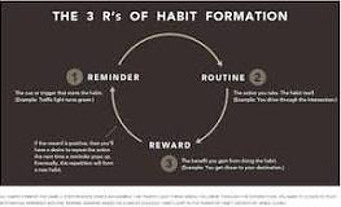How to Live Lean
How to Live Lean? This question when posed always seems to bring raw beef cutlets to mind and the thought of trimming the fat. Well, in this instance, that is exactly what the description implies…a sort of cutting away of all the bad habits, wrong food choices, and negative self-image that is created as we go about our daily lives.
The Live Lean Method was inspired by God! We take a fundamental approach to healing by offering inspiration, motivation, and life-changing advice that, when applied, addresses the root of the problems, situations, or set of circumstances that lead to the formation or trigger of either positive or negative behaviors. These behaviors, when performed in regular intervals, become routines or “habits” that form the basis of how we make decisions, and, rather positive or negative, those choices impact all areas of our existence.
Using the Live Lean Method, the focus resides on replacing the bad or negative habits with good or positive habits; making better, healthy food choices versus wrong food choices; and in creating a new, positive self-image to replace the negative self- image that may plague some of us at our most vulnerable stages of life.
The making of a habit
A ‘Habit’ is defined as an action or behavior that is triggered automatically in response to a reminder or cue that has been associated with its performance.
Everyone has habits, and there is nothing inherently wrong with having them. Some can be, and are, very useful like taking out the trash when you see that it is full – If you have teenagers, you do not know what this looks like nor will you see it in the near future – or automatically locking the front door when you leave the house. There are a few ideas surrounding how a habit actually forms and becomes a part of a person’s daily routine. One idea is derived from Charles Duhigg’s book, How Habit’s Work, where Duhigg’s book refers to the three steps of the “Habit Loop” as cue, routine, and reward known commonly as the Theory of the 3Rs. The idea of the 3Rs is a simple one:

- Reminder. This is a trigger, or cue, that is usually associated with a conscious behavior or a feeling.
- Routine. This is the conscious behavior associated with the trigger in performance. Doing something in a repeated cycle makes the behavior become a routine.
- Reward. The reward associated post conscious behavior performance, i.e. smoking a cigarette – the adrenaline released causes a feeling of pleasure and energy. This makes the habit stick.
Before you say anything, I see it as you do. The C in cue does not match the 3R scenario so let me explain. The third R represents Reminder which is the trigger or cue which is represented in Duhigg’s book.
Personally, I have always struggled with using the term “Reward” as the descriptive for post conscious behavior performance because it is so dependent upon the mental health of the particular individual. I would have preferred the use of the term “Outcome”. The term reward gives the assumption of good solid mental health and a suitable or beneficial outcome. If you do something that causes enjoyment or relieves distress, the pleasurable release of dopamine in your brain can make you want to do it again. But, if you do something that causes distress and increases anxiety, this too creates a habit…correct!!! But look out …OK!!!
How do I develop healthy habits?
“Do not lie to one another, seeing that you have put off the old self with its practices and have put on the new self, which is being renewed in knowledge after the image of its creator.”
~ Colossians 3:9-10, ESV
Understanding how habits form in the first place can ease the change process. Changing or modifying any type of habit is difficult. Whether it’s a diet, alcohol, smoking, or managing stress and anxiety, people are looking for ways to make healthy changes that are not going to send their lives into a complete tail spin.
Living Lean Method takes the “end” position, recommending that you imagine your future self and the lifestyle that you are trying to achieve. Once you have that vision in mind, you can begin to take actionable steps to getting there. How and where do you see your future self, include anticipated lifestyle? The one that is the best you that you feel you are capable of achieving. Take action by doing the following:
EXERCISE
- Take each area of your current life and classify it into categories: Home, Career, Relationships, Church, etc. (These areas are high-level, specific to your life).
- Take each area of your future life and classify it into the same categories as in #1; however, be sure to add any new categories that pertain to the future life / self design.
- Under each category, in the current and future, list the subcategories or areas of change where you wish to develop healthy habits, i.e. Category: Home Subcategories: Food, Budget, Exercise, Cooking, Housekeeping, Personal Hygiene, etc. (Again, these subcategories should be specific to your life).
- Draw a mind map or a literal map between your current life and future life categories, listing the changes or modifications that you would like to see, i.e. Cat: Home; Subcat: Food = Eat More Healthy, Reduce Sugar Intake, Lose Weight.
- Ask yourself the question: What needs to happen or what do I need to do (action) to see the change become a reality? How do I go from wanting to make the change or modification to actually succeeding?
- Take action to develop habit, i.e. Cat: Home; Subcat: Food; Mod: Eat More Healthy = Add vegetables to every meal.
Now you can apply the Theory of the 3Rs from The Making of a Habit section above and you are well on your way to developing healthy habits and learning how to live lean.
How do I break old bad habits?
“Make allowance for each other’s faults, and forgive anyone who offends you. Remember, the Lord forgave you, so you must forgive others.”
~ Colossians 3:13, NLT
Breaking unwanted habits can be difficult, especially if you’ve been engaging in them for a long time. Some bad habits are worse than others and, in some instances, can be considered a routine part of a normal daily life. Habits, such as biting your nails, drinking caffeine too late in the day, or hitting snooze too many times, might not be so beneficial, but are not considered to be as detrimental to your life as eating a whole pie each day or being a workaholic. Still, a bad habit is a bad habit and at some juncture, it will require addressing. Similar to the steps taken in the How do I develop healthy habits? section, take action by doing the following:
EXERCISE
- Take each area of your current life and classify it into categories: Home, Career, Relationships, Church, etc. (These areas are high-level, specific to your life).
- Take each area of your future life and classify it into the same categories as in #1; however, be sure to add any new categories that pertain to the future life / self design.
- Under each category, in the current and future, list the subcategories or areas of change where you wish to break old bad habits, i.e. Category: Home Subcategories: Food, Budget, Exercise, Cooking, Housekeeping, Personal Hygiene, etc. (Again, these subcategories should be specific to your life).
- Draw a mind map or a literal map between your current life and future life categories, listing the changes or modifications that you would like to see, i.e. Cat: Home; Subcat: Food = Eating When Not Hungry, Skipping Meals, Always Cleaning Your Plate.
- Ask yourself the question: What needs to happen or what do I need to do (action) to see the change become a reality? How do I go from wanting to make the change or modification to actually succeeding?
- Take action to break the old bad habit, i.e. Cat: Home; Subcat: Food; Mod: Eating When Not Hungry = Ask: WHY? (Why am I eating this?) every time.
Obviously, breaking old bad habits may require a little more diligence than developing healthy habits. First, you may have had these bad habits for longer than you can remember so they may feel as though they are ingrained in your DNA. Second, these bad habits may have become an integral part of how you function in the world and alleviating that habit will create a huge gap that could require professional help. Take care to really assess the impact of the removal of each bad old habit selected for change or modification. You may need to incorporate a phased approach or slow reduction in performance of a behavior while seeking professional assistance in order to properly remove a bad habit. We would like these methods to be beneficial to you or your environment not be a catalyst for self-destruction.
What outcome or result can I anticipate?
“Therefore, if anyone is in Christ, he is a new creation. The old has passed away; behold, the new has come.”
~ 2 Corinthians 5:17, ESV
The Live Lean Method is a lifestyle change that calls for continuous improvement. As with anything worth working this hard for, reward yourself accordingly! Keep diligent and know that results vary by what you are willing to do (action) to accomplish your goals. Remember, breaking a habit can be incredibly difficult. Make sure to acknowledge how far you’ve come, and give reward yourself regularly along the way. Even small motivators, can increase your confidence and motivate you to continue to fruition. Focus on the progress you make and you will be less likely to become discouraged or engage in negative self-talk, both of which will limit your motivation.
Until next time….. Live Lean!

Tammy Sullivan-King
Living Lean Method